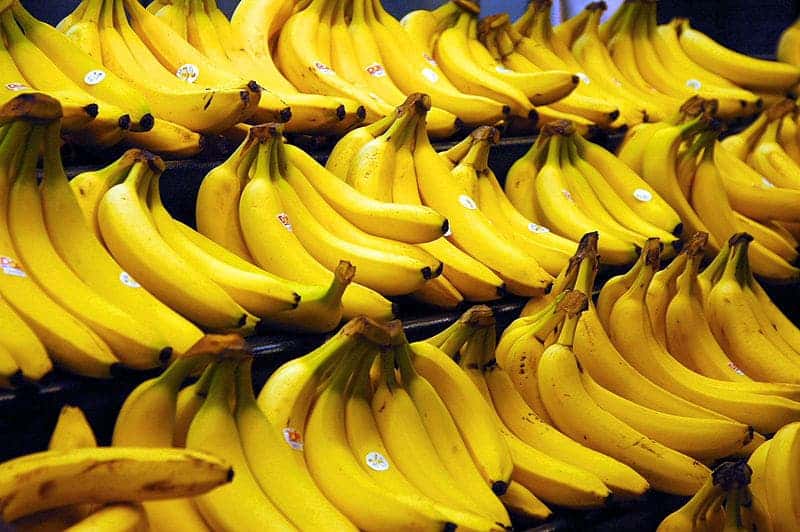While global warming has increased banana yields in the past few decades, the trend is bound to reverse. Rising temperatures will severely affect bananas, making them more prone to disease.

Bananas are one of the most important crops worldwide, but they’re more vulnerable than we think. Despite numerous varieties and cultivars, only a few of them are commonly exported. The Cavendish cultivar, by far the most common one today, only came into existence in the 19th century and was still fairly rare just 60 years ago.
Cavendish bananas took over from the Gros Michel cultivar. Although Gros Michel was reportedly tastier, it was more vulnerable to something called the Panama Disease. Panama disease, a wilt caused by the fungus Fusarium oxysporum f.sp. cubense, wiped out vast tracts of Gros Michel plantations in Central America, essentially forcing growers to switch to the Cavendish we have today, which was more resilient to this disease.
But Cavendish bananas are vulnerable to other types of diseases — and climate change is making it worse.
According to a 2019 study, changes in moisture and temperature are increasing the risk of the Black Sigatoka disease by almost 50%.
“Black Sigatoka is caused by a fungus (Pseudocercospora fijiensis) whose lifecycle is strongly determined by weather and microclimate,” says Dr. Daniel Bebber, of the University of Exeter. “This research shows that climate change has made temperatures better for spore germination and growth, and made crop canopies wetter, raising the risk of Black Sigatoka infection in many banana-growing areas of Latin America.
Black Sigatoka was first reported in Honduras in 1972 which is virulent against a wide range of banana plants, was first reported in Honduras in 1972, reaching Brazil in 1998 and the Caribbean islands of Martinique, St Lucia and St Vincent and the Grenadines in the late 2000s. As temperatures continued to rise, the disease also spread north, and is now as far north as Florida.
Ironically, banana growers were one of the few categories who were actually helped by climate change, with higher temperatures sometimes increasing yields. But now, this will allow diseases like the Black Sigatoka to spread farther than ever before. The recent arrival of a deadly fungus in Latin America (Tropical Race 4 — essentially a strain of the Panama disease that also affects Cavendish bananas) is another pressing risk. India, the world’s largest banana producer, and Latin America can be particularly affected, researchers say, and many fear we may be in for a repeat of the Gros Michel situation.
In the worst-case scenario, it’s not out of the question for growers to be forced to switch to different cultivars, which will be extremely costly and could drive many out of business. Ultimately though, it may even get too hot for bananas to be grown safely in today’s most productive areas.
Every 100 billion bananas are eaten every year in the world, making them the fourth most popular agricultural product in the world. Out of these, the Cavendish banana accounts for almost half.









